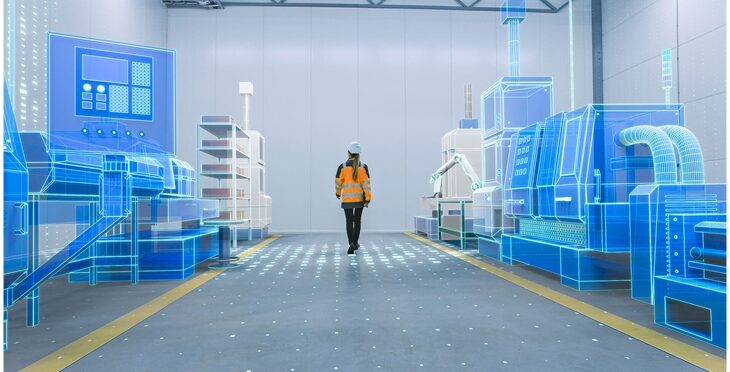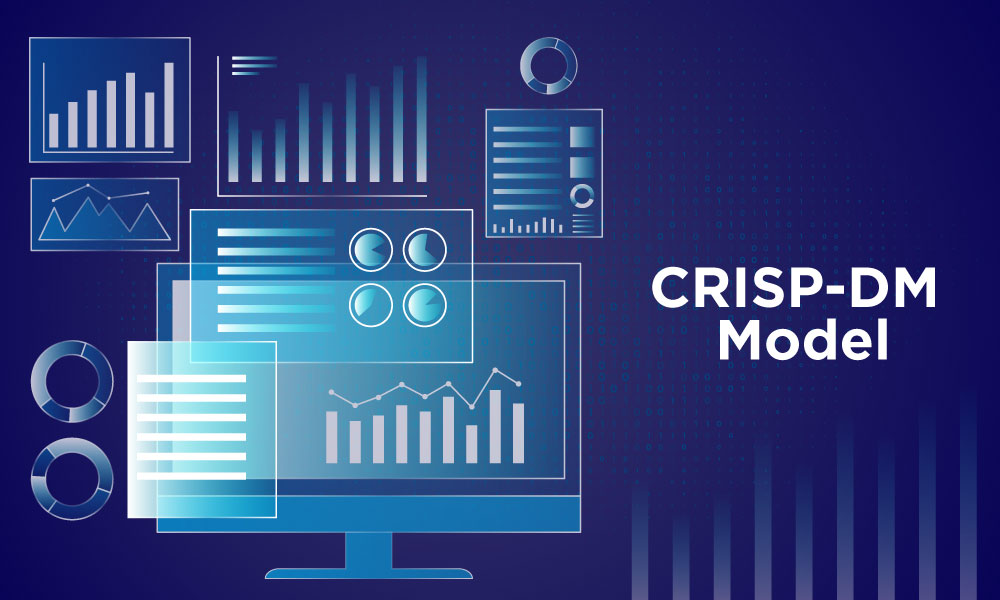What Exactly Is A Digital Twin In The Supply Chain?
Digital twin in supply chain is a virtual simulation model of a real supply chain. It helps to assess supply chain dynamics and anticipate process success.
A virtual supply chain is made up of assets, warehouses, logistics, and inventory placements. The digital twin enacts the performance of the supply chain. It also includes all the complexity that causes value loss and hazards. It does so by using advanced analytics and artificial intelligence.
The digital twin reveals areas of volatility and unpredictability. It also reveals areas where optimization is possible. A digital twin also allows for scenario planning. This enables the corporation to make decisions based on business needs. They don't have to resolve difficulties as they emerge.
Real-time data of work orders, sales orders improve digital twin. Also, pending approvals, demand, and supply improve DT models. The information gathered from several sources includes:
- IoT devices (e.g., sensors)
- logistics and transportation databases, and
- operations databases.
- Vendor data (CRM data, bills, and invoices)
- User experiences (online reviews, customer service tickets)
Supply chain managers can use web scrapers to get real-time data. They can collect data from online resources such as business or rival websites, online listings, etc.
Advantages Of Digital Twin In Supply Chain
Network Optimization
This means finding a happy medium between service and cost. Even in normal times, businesses may face unexpected shifts in demand or supply. Also, if the network is not equipped to accommodate these changes, supply chain, and business performance may suffer.
With a digital twin, you can predict how changes in demand and supply will influence the network. The network consists of physical locations and supporting systems. The supply chain uses these to deliver items and services to end customers. This also aids in determining whether the necessary facilities and transportation capacities are in place. Moreover, this helps to handle a rise in sales of a specific product. It also helps to deal with a product shortfall from a major supplier.
Also, you might release a new product and need to add nodes to your network. A digital twin assists you on what nodes need addition and where this new offering must launch. It may also help you in determining how to reduce your network.
A digital twin assists in understanding the impact of network modifications on customer service. This also allows you to balance cost and service levels while meeting consumer expectations. It also plays a big part in modeling how network design principles affect your carbon footprint and CO2 emissions. Thus allowing you to reach your sustainability goals without sacrificing cost or service.
Process Optimization
It leads to increased efficiency and productivity. Processes in many businesses have become complex. This complexity makes them less efficient and more expensive. A digital twin assists in taking a close look at essential processes. It helps to identify bottlenecks, time, waste, and inefficiencies.
Also, it models the result of certain focused improvement actions. As a result, there is increased efficiency, productivity, and capital use. It also lowers operating expenses.
Inventory Optimization
It entails putting the right commodities in the right place at the right price. Most businesses also face an ongoing inventory challenge of determining how much of what to keep and where. Meanwhile, they have to maximize customer service at the lowest possible total cost. But, managing all the components that go into that calculation is a difficult task.
Especially for firms with multiple SKUs and consumers across many regions and geographies. Also, greater unpredictability in demand requires more inventory. This increased inventory is necessary to meet required service levels.
A digital twin is also suited to assist in this regard. It can help you optimize inventory in a single warehouse and across the entire network. It does so by taking demand forecasts into account. Moreover, a digital twin also improves replenishment policies and changes inventory levels. It does this according to demand to avoid stockouts while minimizing costs.
Application Of Digital Twin In Supply Chain
The digital twin is flourishing in Industry 4.0 due to its smart qualities to improve production. The digital twin has also changed supply chain management to improve efficiency and cut supply chain costs. It's now a virtual supply chain replica with enough assets and logistics. There are many uses of the digital twin in supply chain management. These uses also provide various benefits in an efficient and effective manner.
Quicker Problem Solving
There are always some views of supply chain management frictions. The digital twin can also help to improve problem detection. It can also generate faster problem solutions without requiring much human participation.
Positive Alterations
The digital twin minimizes possible risks and detects existing problems. The digital twin in the supply chain also contributes to positive transformation. This enables the supply chain department to save money, increase ROI, and reduce other negatives.
Enhancement Of Risk Monitoring
The digital twin assists in determining the optimal line of action for risk monitoring improvement. It is also possible to achieve success using a variety of digitally isolated testing methodologies.
Comprehensive Long-Term Planning
To prepare for the future, supply chain management requires long-term planning. The use of digital twins also aids in the optimization of supply chain management operations. Moreover, it identifies more capacity in the future to generate a detailed strategy.
Optimization Of The Network
The use of digital twin technology aids in the detection of specific changes required. These are important changes in the network of demand and supply, physical sites, and customer service. The digital twin assesses the need to add nodes to the network and helps lower network costs.
Data Management That Works
The digital twin's data management is one of the most important features in supply chain management. It aids in successful data management by comparing historical data with real-time data. This helps to discover weak and strong areas to focus.
Top Digital Twin Corporations Transforming Supply Chains
Datumix – Monitoring Of Equipment Condition
The performance of machinery is critical in the supply chain process. Machinery that fails on a frequent basis has a negative influence on the firm. The digital twins in warehouse and inventory management track the performance of machinery and other equipment. It minimizes downtime by allowing predictive maintenance plans.
Datumix is a startup established in the United States. It offers a virtual 3D simulation of the essential equipment. They use machine learning to create a digital twin. The digital twin checks equipment performance before installing the algorithm in real-time. Data from the 3D model combined with AI is then used to maintain the equipment.
Warehouse Simulation - Cognition Factory
Warehouses and inventory distribution hubs are critical components of logistics infrastructure. It isn't easy to automate warehouses without incurring downtime and optimizing the setup of the robot fleet.
Simulation using digital twins allows assessing the possible impact of layout modifications. It also assesses the impact of new procedures. Thus, it helps in the dynamic optimization of operations before making a change.
Cognition Factory is a German firm that offers CognitiveFlow. It is an AI-based digital twin solution for warehouse simulation. The simulation program helps the warehouse in planning and configuration. It also helps in the optimization of mobile robots and material handling systems. This solution incorporates data from both on-site and off-site sources.
Sensat - Logistics Infrastructure And Design
Organizations aim to improve the design and effectiveness of their supply networks. Logistics organizations are investigating virtual and augmented reality operations. The digital twin impacts the design, operation, and optimization of logistical infrastructure. Infrastructure digital twins offer exact designs and layouts for new facilities.
SenSat is a British firm. It provides cloud-based digital twin solutions that imitate real-world situations in real-time. Their approach analyses a system with visual overviews. It interacts with many data sources at the same time. Companies can use warehouse simulators to maximize space, labor, and material transportation.
Logivations: Logistics And Supply Chain Network Optimization
Companies aim to improve their supply chain designs by optimizing their logistics networks.
Logivations is a German startup. They provide AI-powered Web-to-Modeling & Optimization (W2MO) software. It is used to design a logistics network's digital twin.
By altering and controlling the network, the designed supply chain is constantly optimized. To direct the simulations, the digital twin connects with an AI program. The digital twin also combines with an AI algorithm to lead simulations. This also helps to optimize the topologies of distributed networks.
Conclusion
Digital twin technology can assist businesses in creating a virtual version of their supply chain to optimize business choices and serve customers. With hyper-personalization, customer product and pharmaceutical firms must reconsider their business strategy, investment, and footprint decisions to serve customers better and enable a cost-effective supply chain of one. The new weapon supply chain must have a digital counterpart to change efficiently.
You may also like to read:
How Can Digital Twin Help Manufacturers Transform?
What Are Some Of The Application Of Digital Twin Technology?





